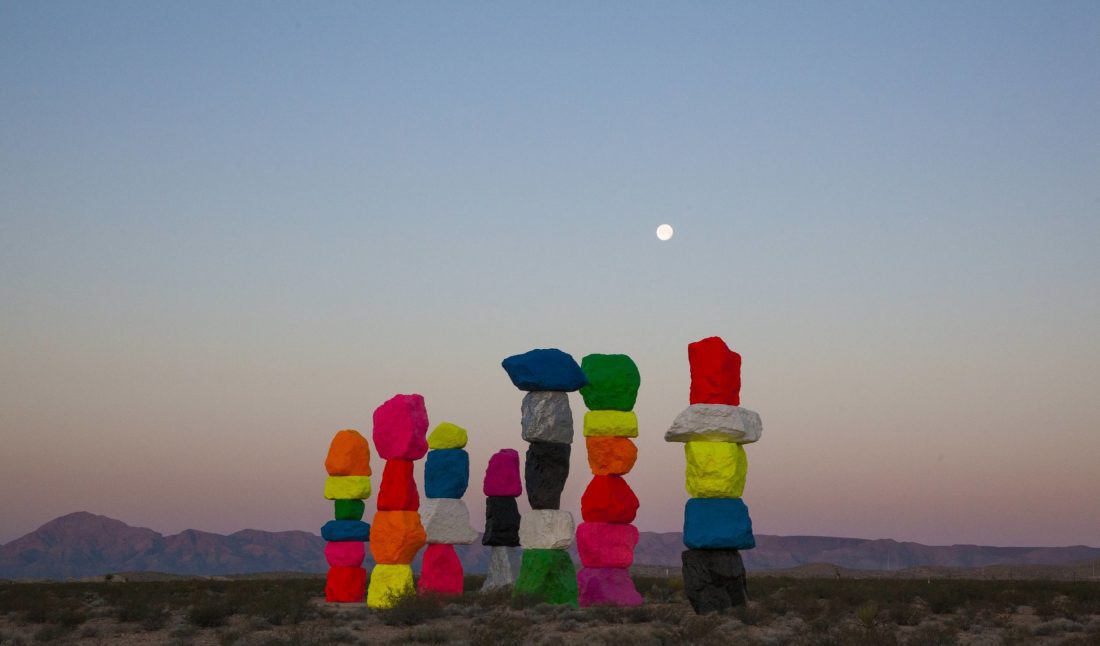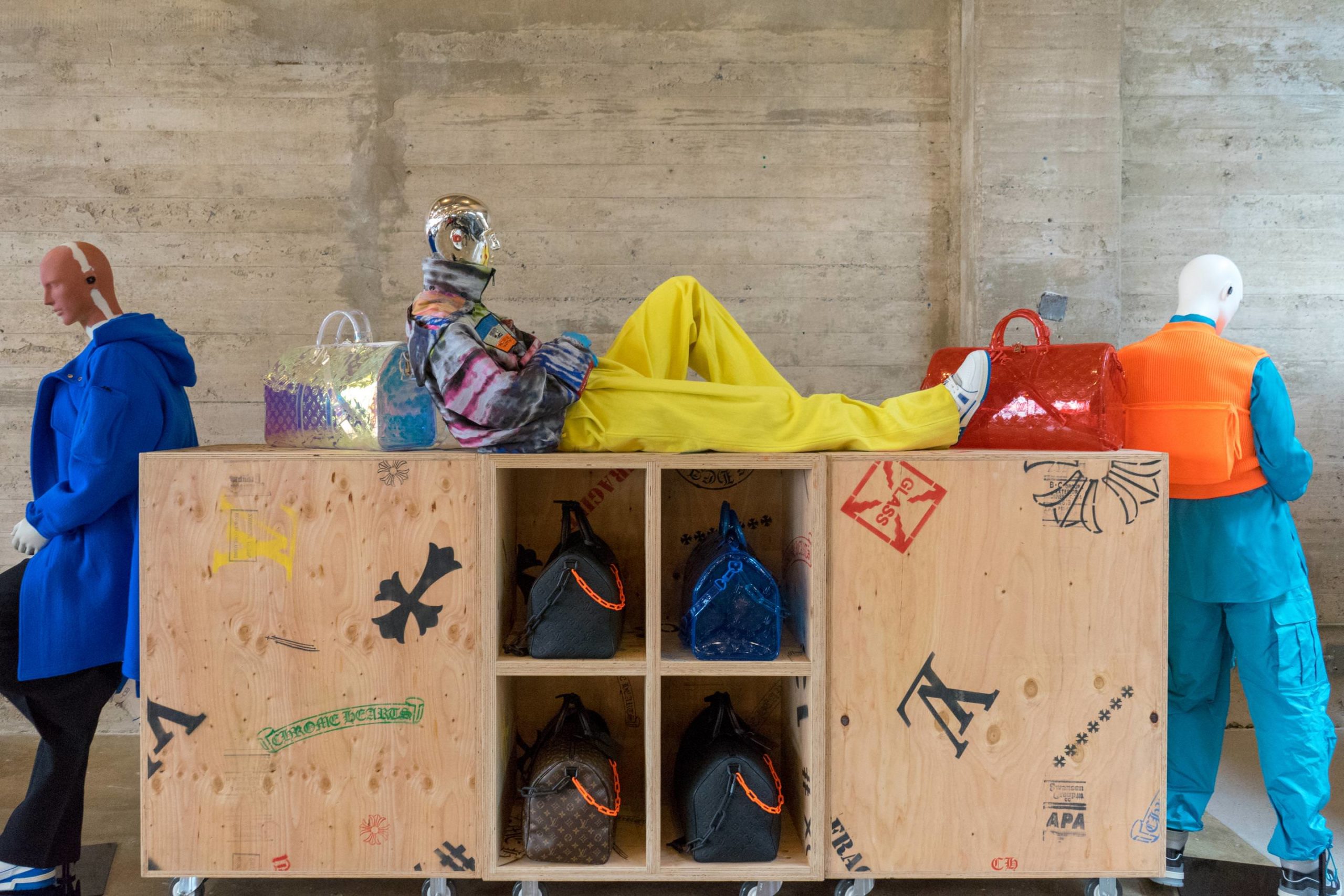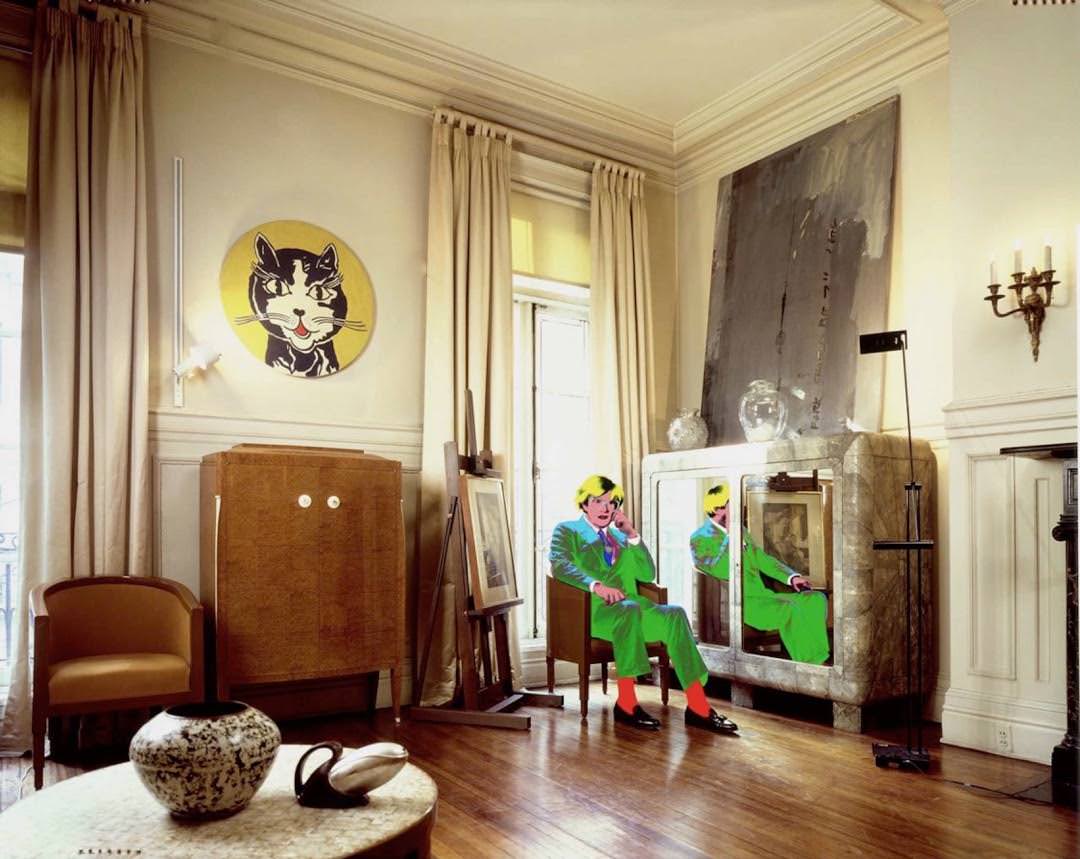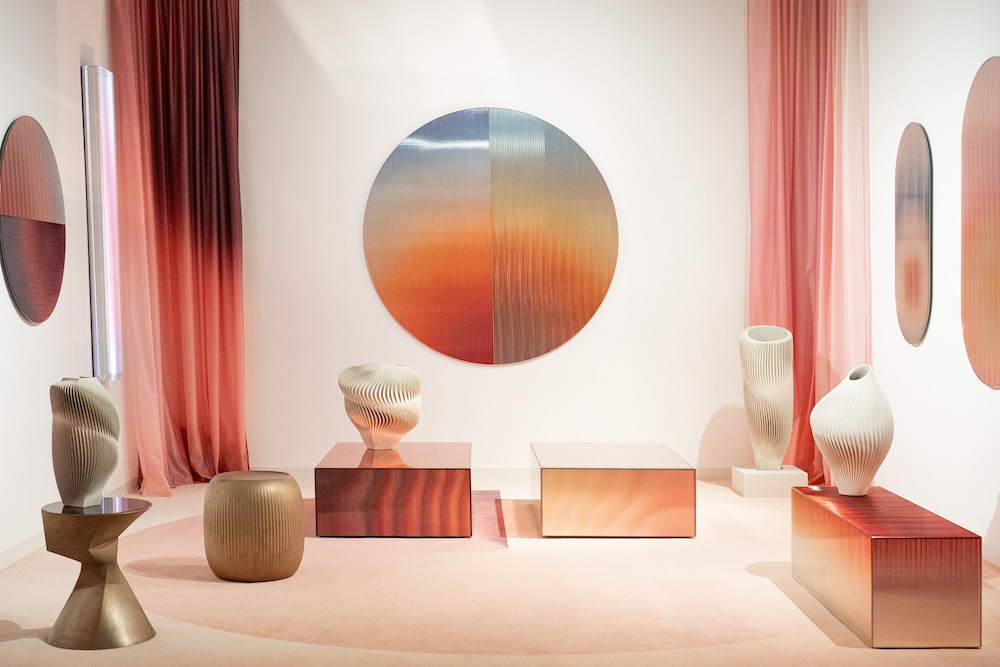Ugo Rondinone is a romantic minimalist. His colorful, poetic works, like dog days are over and seven magic mountains, have graced both high- and low-traffic public spaces, spreading inspirational messages of optimism and love.
Rondinone’s work exists somewhere between fiction and reality. His brightly colored target paintings can put a viewer in a meditative state, while his tree sculptures are meant to make them actively question. Each can take close to a year to develop and evolve around his own practice of self-inspection.
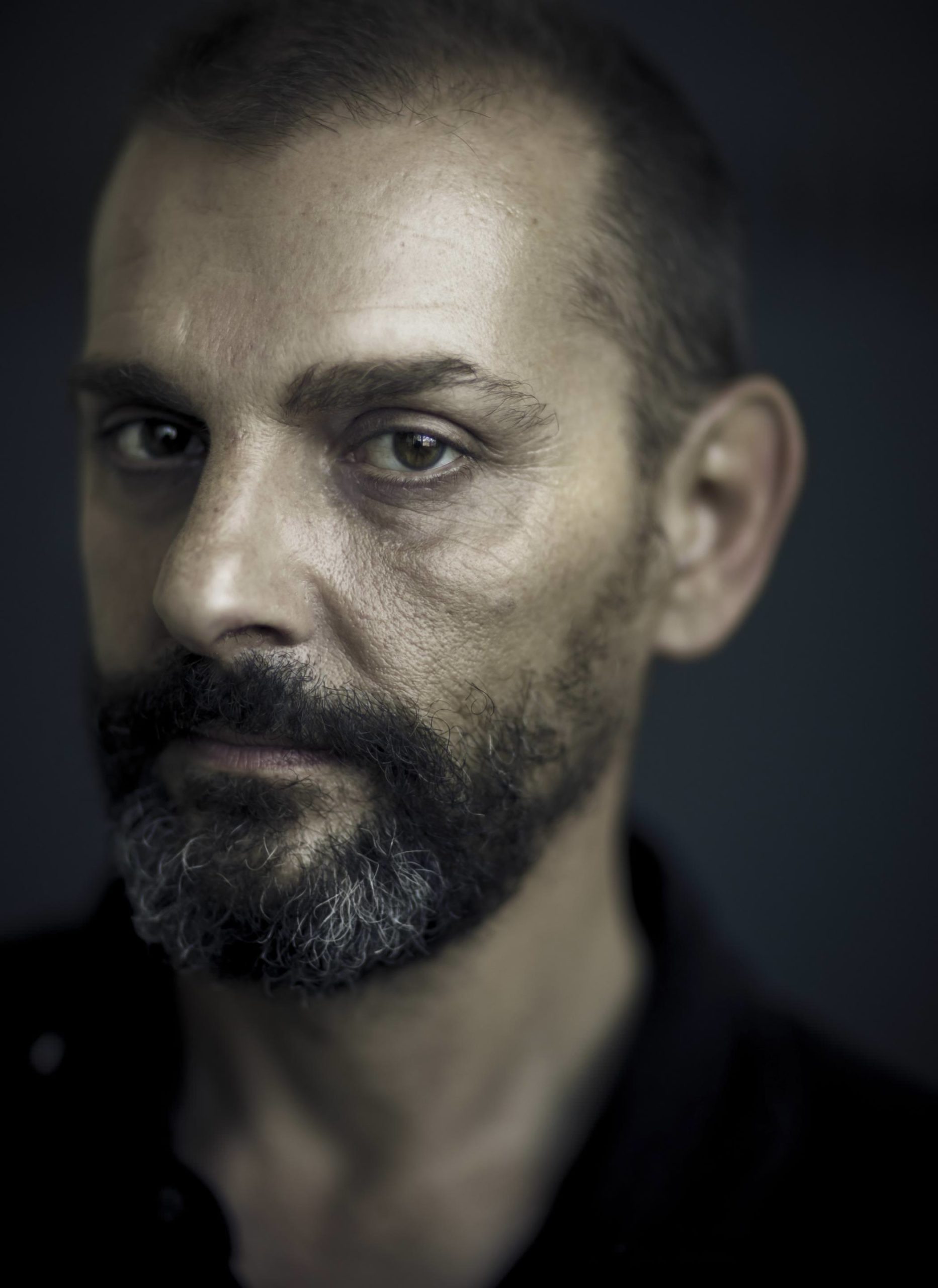 Ugo Rondinone.
Ugo Rondinone.Photo by Christian Grund.
Courtesy of Ugo Rondinone.
After his first exhibition in 1989 (“weihnachtsausstellung” at the Kunstmuseum Luzern) opened to the public with an inauspicious turnout, he decided to leave his studio and work nomadically instead. “Nobody came. I was frustrated,” he says. “I made a point at that moment to change the situation and make it more about me, about my own life, and get out of the studio and draw in nature. This was the beginning of a contemplative life as an artist. The gift of being an artist is really the time that you have by yourself. That’s where it started.”
This winter, Rondinone’s solo show “good evening beautiful blue” is part of the inaugural program for the reopening of The Bass Museum in Miami Beach. On view through February 2018, his multiroom exhibition presents work from throughout his career.
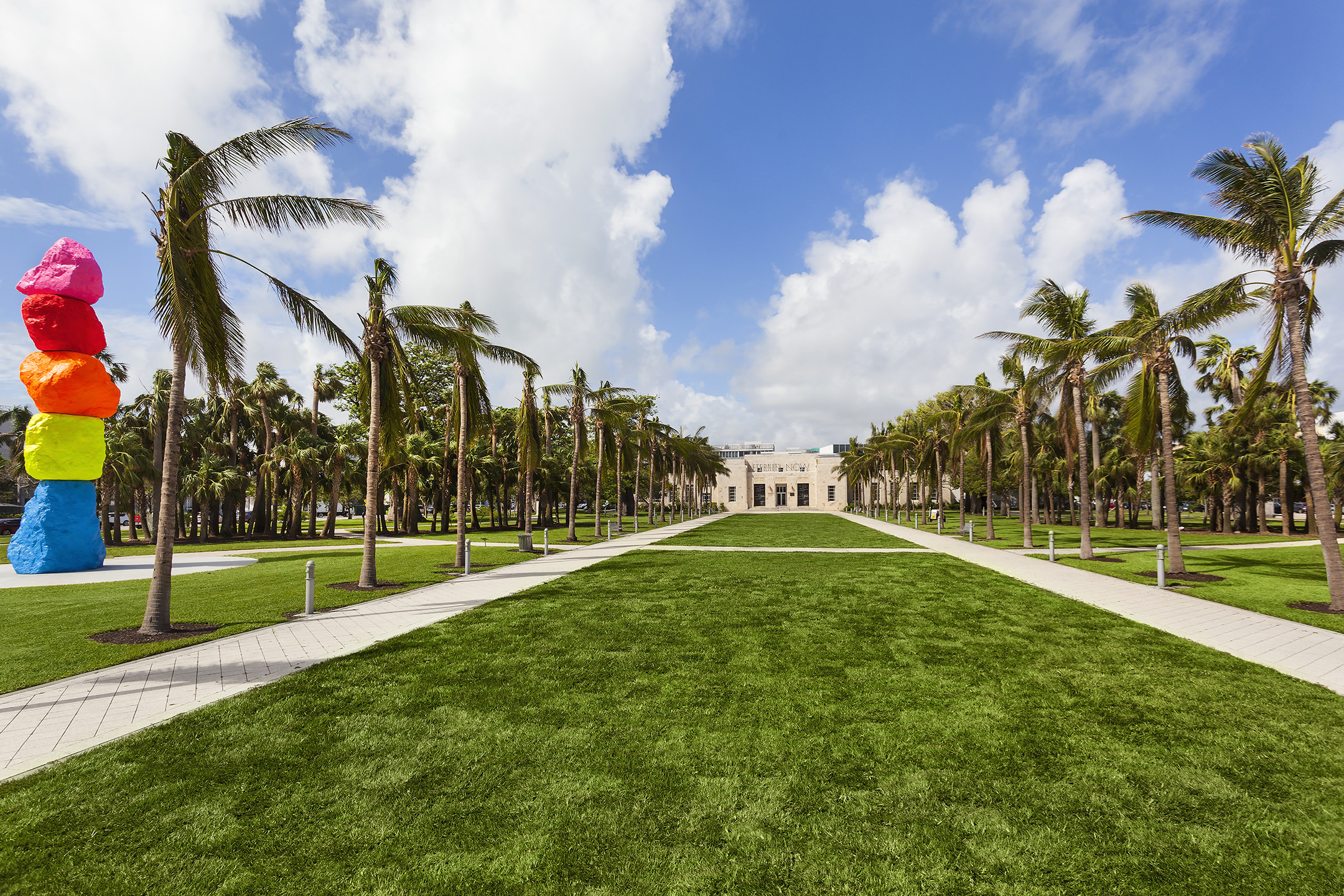 View of The Bass and Ugo Rondione’s miami mountain (2016) from Collins Park.
View of The Bass and Ugo Rondione’s miami mountain (2016) from Collins Park.Photography by Zachary Balber.
Courtesy of The Bass, Miami Beach.
Whitewall spoke with the artist about his practice of self-inspection and contemplation over his past few colorful decades.
WHITEWALL: Tell us about “good evening beautiful blue.” It features three rooms, bringing together various works dating back to the late 1990s.
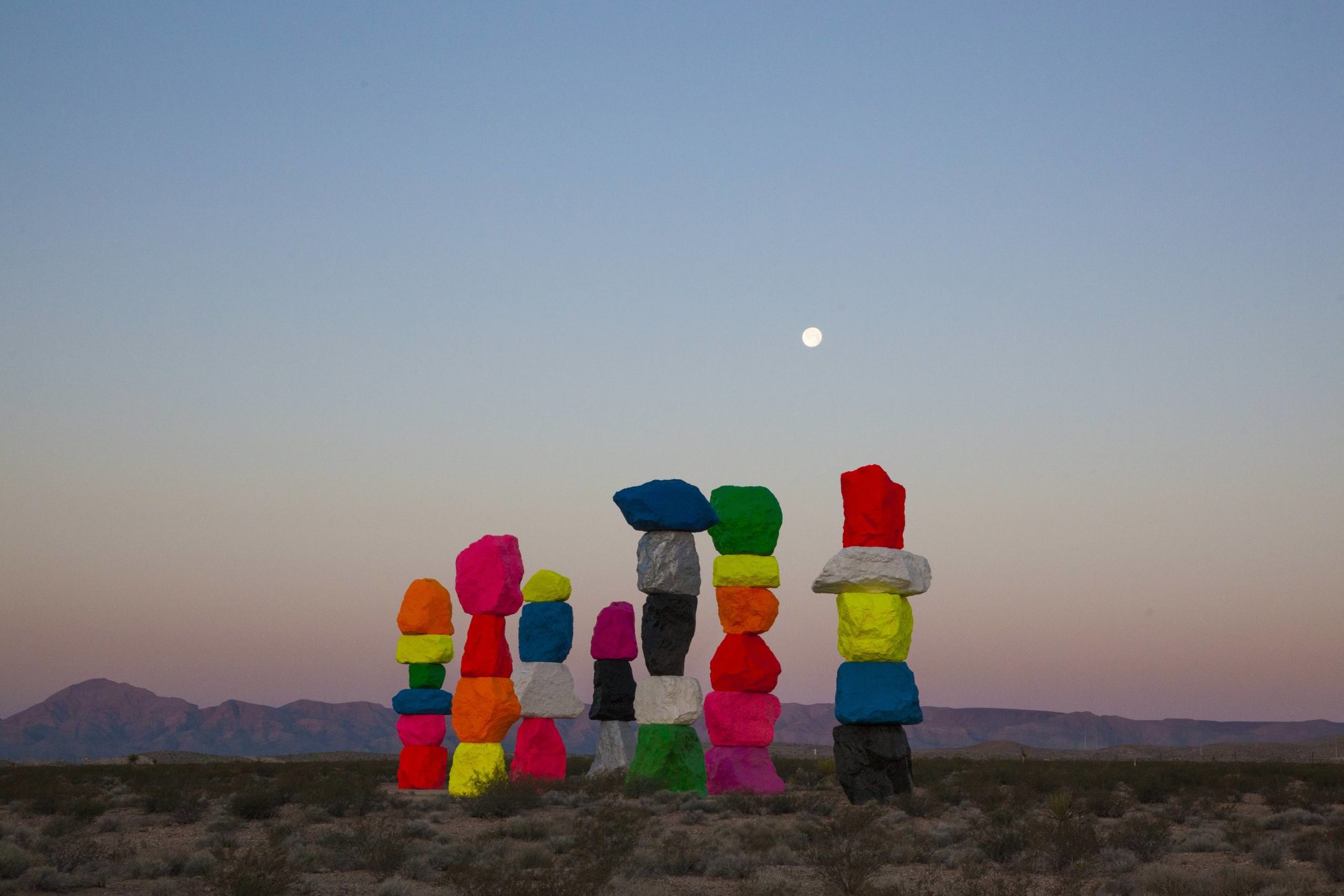 seven magic mountains
(2016).
seven magic mountains
(2016).Photo by Matt Haase.
Courtesy of Ugo Rondinone.
UGO RONDINONE: Those three principal works all deal with self-inspection and with the spectrum colors.
You enter the museum, and on the second floor, you will encounter clockwork for oracles, an installation I did in 2008 for the Institute of Contemporary Art in Boston. It’s 52 windows in different sizes on four walls. Instead of having glass windows, there are mirrors in different colors. There’s a wall of whitewashed newspapers, which is always the daily newspaper of the region. For this one at The Bass, it’s the Miami Herald. When you enter, you reflect yourself—literally. In the second room you’ll find vocabulary of solitude, which is a portrait of a single person by himself, represented by 45 actions. Those actions are represented by a contemplative clown. I made a list of things that I do when I’m by myself and I came up with 45 actions—sleep, wake, stand, walk, shower, pee. They’re very generic actions; something everyone does by themselves. It ends with going to bed again, so it’s a loop. So you have 52 windows that represent a full year—a window for each week. In the second room, you have 45 clowns that represent one day, 24 hours, for a single person. And in that room, the walls will simulate a sunset. It will be painted on all four walls, and in the space itself we will have the clowns and one of the giant lightbulbs I did—the 8th hour of the poem. (I made 24 to represent the hours in a day.)
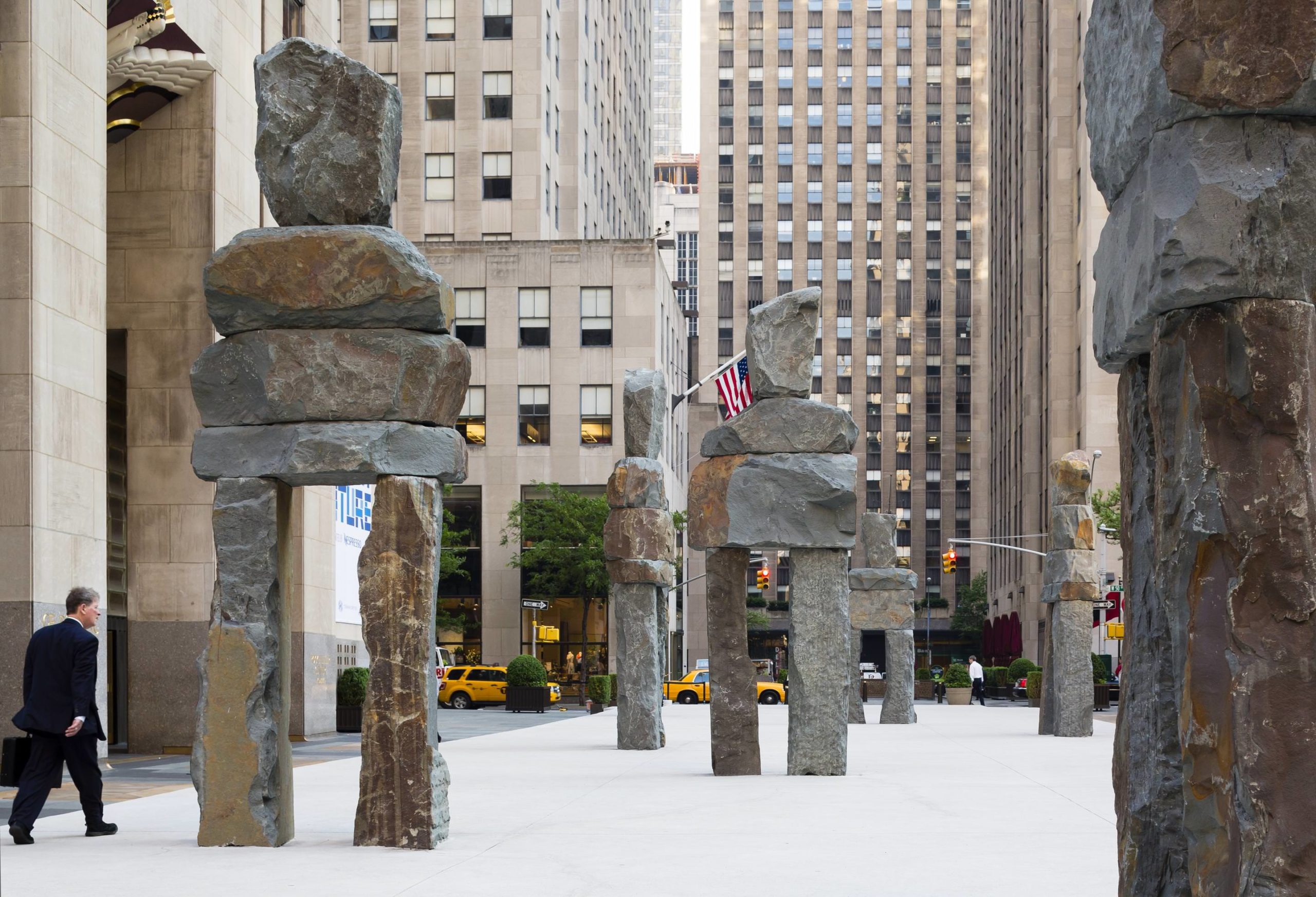 human nature, 2013.
human nature, 2013.Photo by James Ewing.
Courtesy of Ugo Rondinone.
In the third room will be the oldest work, it’s late . . . It consists of a blue neon ceiling that turns six projected black-and-white videos blue. There are 12 videos on six projections, each between a female action and a male action. It’s very simple gestures—a woman opening a door, walking into a room, and closing the door.
WW: For vocabulary of solitude, why did you choose clowns?
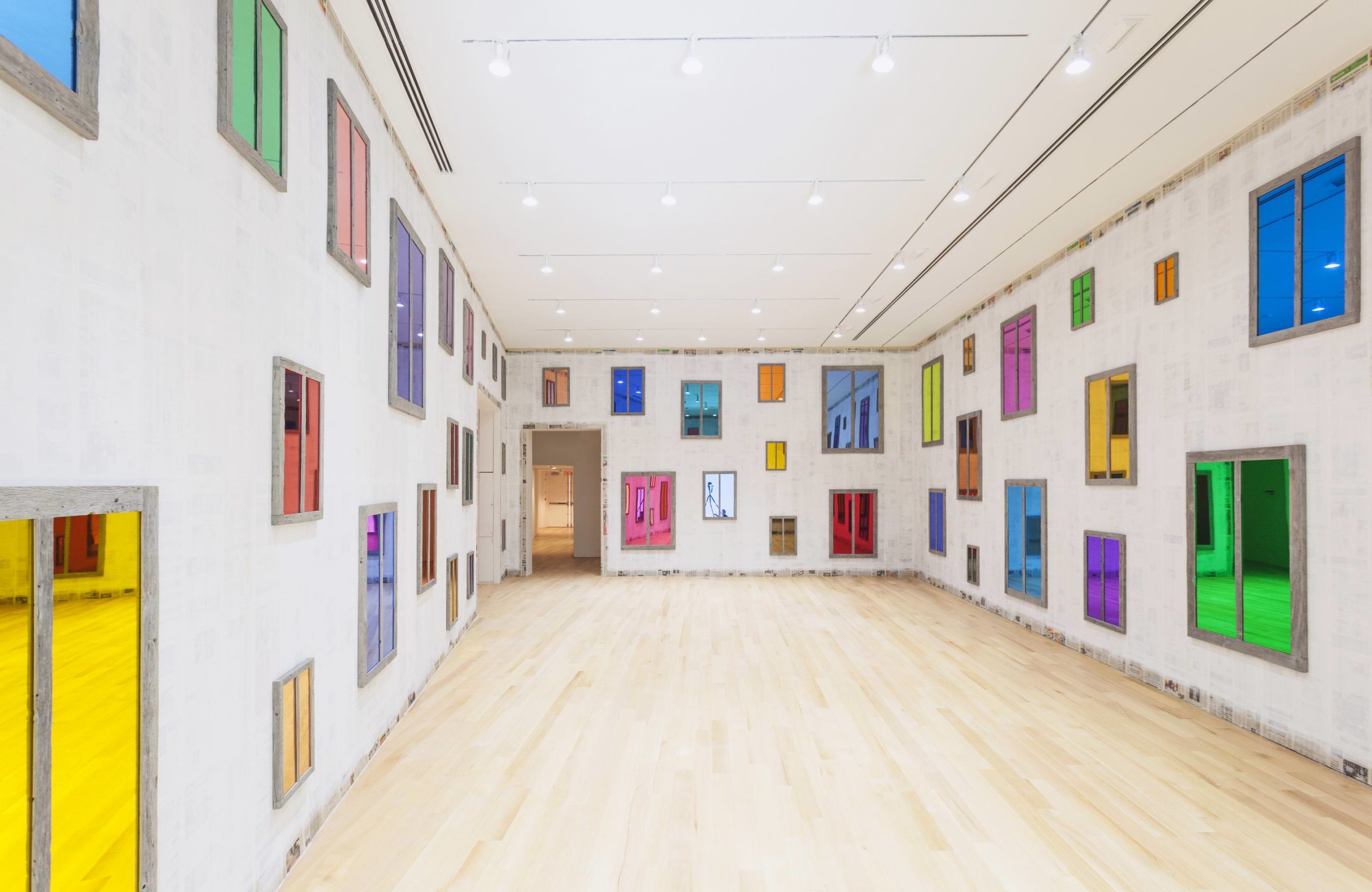 Installation view of Ugo Rondinone’s clockwork for oracles, apart of the exhibition “good evening beautiful blue.”
Installation view of Ugo Rondinone’s clockwork for oracles, apart of the exhibition “good evening beautiful blue.”Photography by Zachary Balber.
Courtesy of the artist and The Bass, Miami Beach.
UR: As an artist, once you’ve exposed yourself and you work in the art world, you work in the entertainment business in general. So, the clown is this product just to entertain. That’s his function. In my case, those clowns don’t entertain; they’re just passive. So they don’t follow the rule. It’s a heroic figure representing the artist who doesn’t follow the rule—who doesn’t follow the expectation. Once you don’t follow the expectation, it takes off the pressure, and you’re free to do what you want. It was a figure that allowed me to escape.
WW: Tell us the story behind “seven magic mountains” in Las Vegas and “miami mountains” in Collins Park in Miami. We know you’ve done works with natural materials, and have explored bright colors in the past, but what was the starting point for these large sculptures? What it this about?
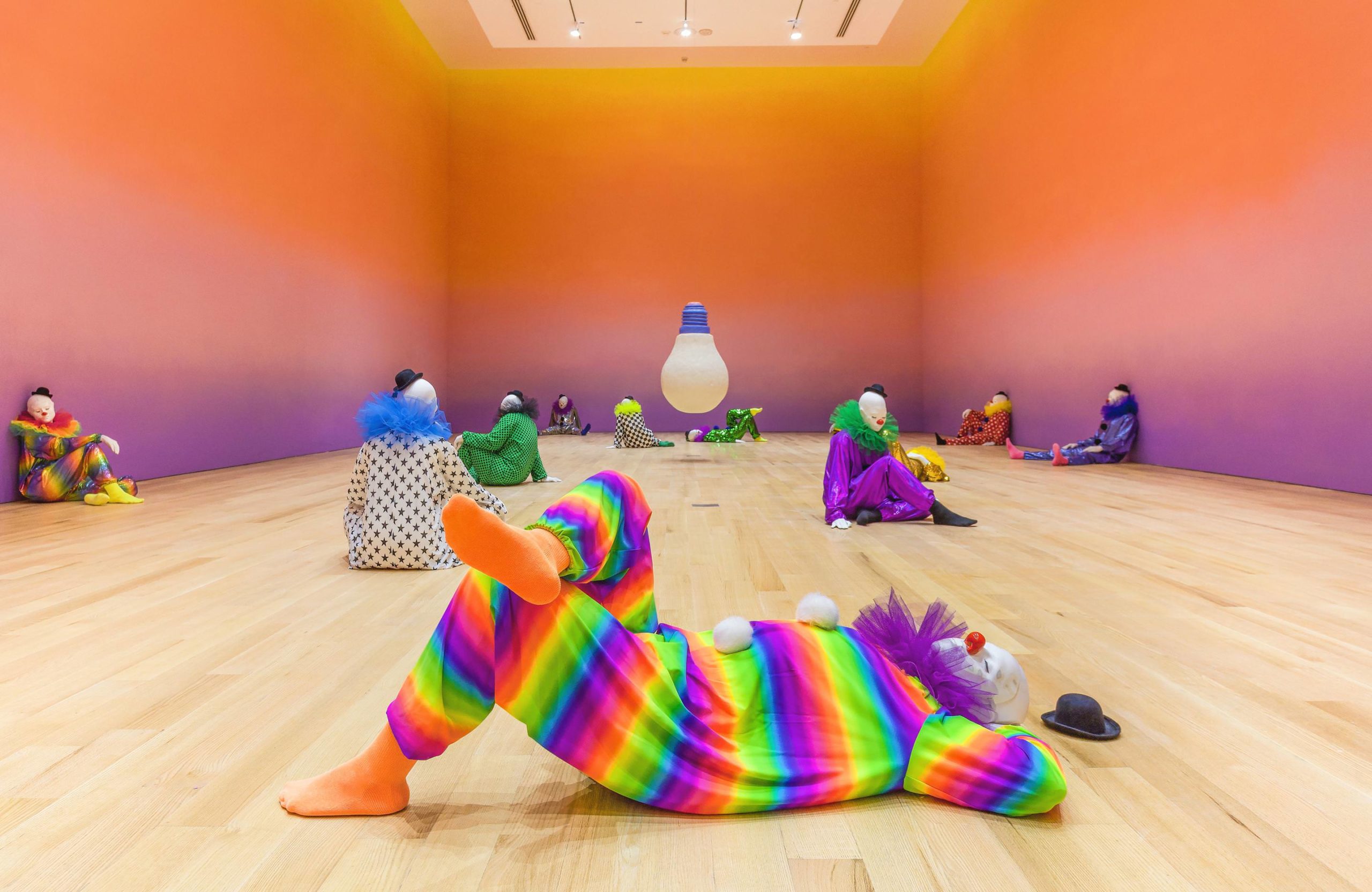 Installation view of vocabulary of solitude, apart of Ugo Rondinone’s exhibition “good evening beautiful blue.”
Installation view of vocabulary of solitude, apart of Ugo Rondinone’s exhibition “good evening beautiful blue.”Photography by Zachary Balber.
Courtesy of the artist and The Bass, Miami Beach.
UR: Timing is everything. In 2013 I finished an important project for Rockefeller Center with Public Art Fund called “human nature” of nine standing figures made out of boulders. They looked lie play dough figures—all nine of those figures’ stones were left naturally. What I wanted was to bring in something very basic and primitive in a highly developed part of the world—Rockefeller Center.
At the same time, I was approached by the Art Production Fund and The Nevada Museum to produce something for the desert—something for the intersection between Los Angeles and Las Vegas. I wanted to use the same material of stone that I did for Rockefeller Center but with a contrary air. So, in the desert, the stones would look artificial. That was the dynamic that the works built up.
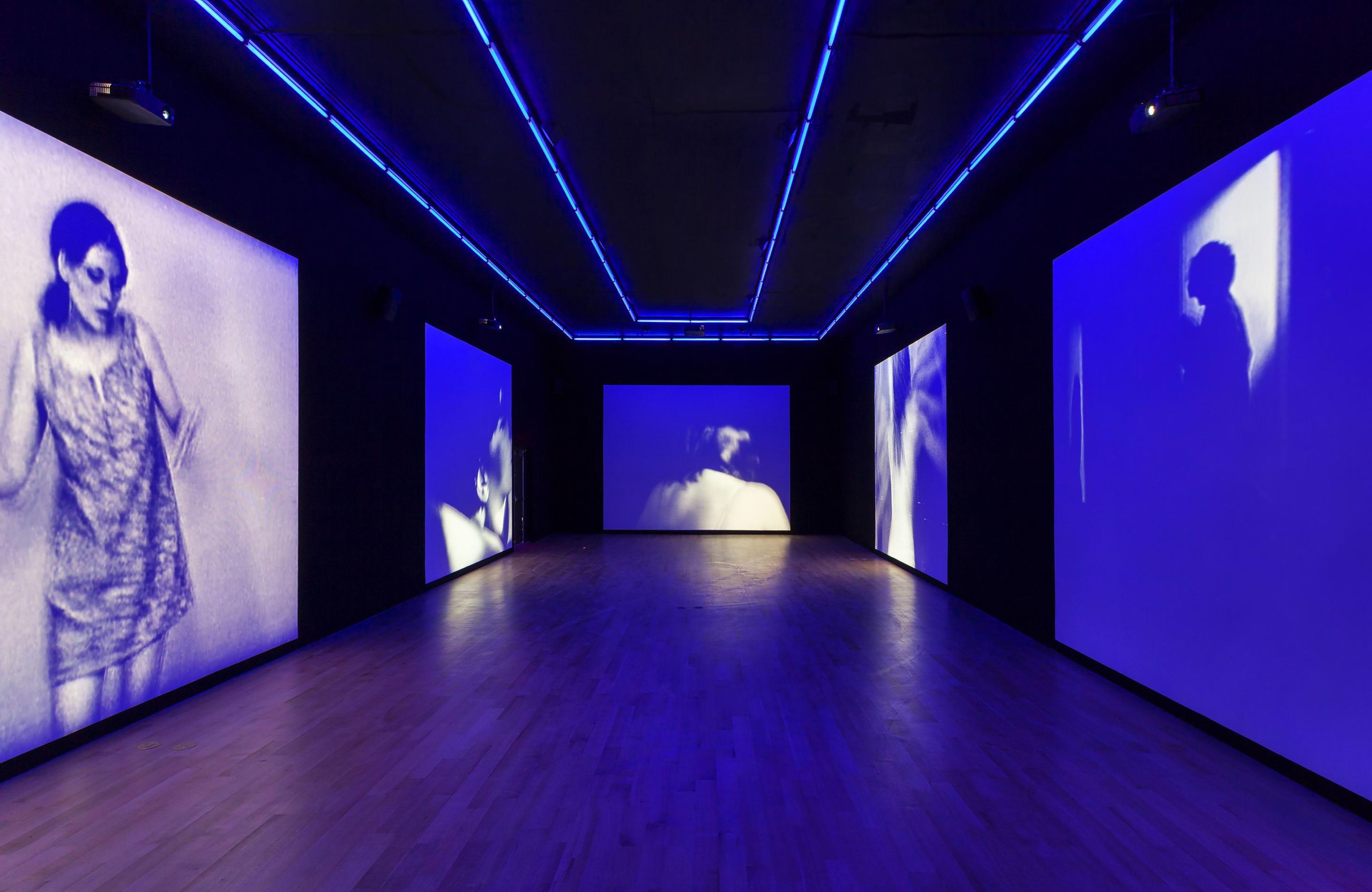 Installation view of Ugo Rondinone’s it’s late…, apart of the exhibition “good evening beautiful blue.”
Installation view of Ugo Rondinone’s it’s late…, apart of the exhibition “good evening beautiful blue.”Photography by Zachary Balber.
Courtesy of the artist and The Bass, Miami Beach.
I was also interested in bringing the history of Land art—a very specific art moment from the 1970s in the wake of the Vietnam protests, where they thought they had to go out and free themselves, use nature as their backdrop, and not commercialize the art anymore. I wanted to bring that piece of Land art history further. Some Land art sites are hard to find because they’re very camouflaged with their surroundings. That part I wanted to change. I wanted to make it more accessible for the general public. I think it’s very important once you’re outdoors in public spaces that you do make an effort to make it belong to the public. It’s something everyone can relate regardless of what art background this person has.
I limited myself to the seven rainbow colors of the spectrum. For me, that symbolizes a holistic system where you have all of the aspects of emotion represented by colors. It also highlights the background. In the city, this primitive sculpture highlights the artificiality of New York City. And vice versa in the desert.
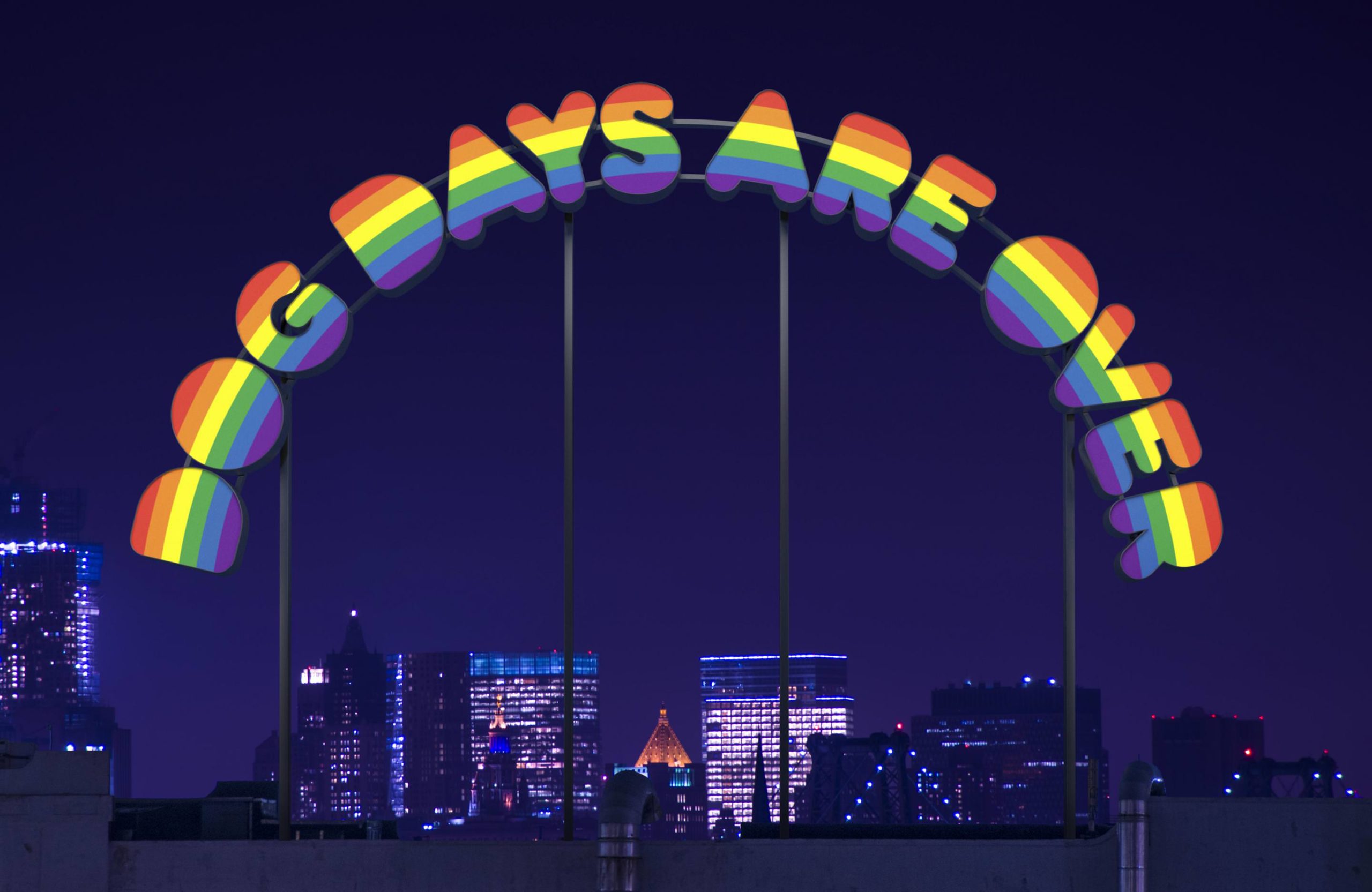 dog days are over.
dog days are over.Courtesy of Ugo Rondinone.
It’s also to bring some notion of nature in general. Many people who wouldn’t necessarily go to the desert will all of a sudden discover the beauty of the nature, the silence. I was shocked by the soundlessness only thirty minutes away from a very busy city.
WW: The one in the desert will be on view until at least next year, but there have been rumors it may become a permanent work of art there. Are there any talks of this?
UR: Yes, there are some talks. We have an effort that it may stay there forever. Of course, it’s federal land and there are many political obstacles to resolve. That’s difficult to negotiate, but everyone is realizing the benefit that it has when people are using the desert.
WW: You also recently had an exhibition, “I Love John Giorno,” which debuted at 13 locations in New York City. You have expressed your admiration for him for quite some time, and you two have been longtime friends. What was this about? Why was this something you wanted to create?
UR: John is a poet, as you know, and I’m an artist. It was a marriage in heaven 20 years ago, as I’ve always been very interested in poetry and John is related, starting with Warhol, to the art world. In 2000, when he had to move his archive, I saw he had been collecting since 1958. He had an archive, with each year contained in a box, and I was interested in turning that into a visual moment for an exhibition. I hired two archivists, and in three years they archived around 13,000 works.
Starting in October 2015 and running until January 2016, I showed the exhibition at the Palais de Tokyo “I Love John Giorno.” It was nine rooms, each dedicated to a specific layer of John’s life. I wanted to bring it to New York to celebrate John’s 80th birthday this year, but I needed something different. So I wondered if the alternative spaces would be interested in sharing an exhibition, which has never been done in New York before—where institutions shared one exhibition. There were 11 institutions that shared an exhibition (Sky Art, The High Line, Swiss Institute, Red Bull Art New York, Hunter College Art Galleries, The Kitchen, White Columns, Artists Space, The New Museum) and this was a very special point.
And, of course, it was also to highlight poetry in general. Poetry has been marginalized in the past 20 years. Until 15 years ago, the New York Times would still have a half page dedicated to poetry. That all slowly vanished. Everybody has a notion of poetry, and they know it exists, but to expose itself is rare. I wanted to amplify that with a New York poet—who also explored a lot of boundaries in the 1960s with his poetry—and influence a new generation and audience in New York City.
WW: You also work in an old church that you bought a few years ago in Harlem. How does working within that space enhance your creativity?
UR: The space came by chance. I was driving down Fifth Avenue after coming back from upstate, and it was announced that it was for sale. I was curious. This was in 2011, and then it took me two years to renovate, and since 2013 I’ve been in there.
The size is intimidating, though. It took me a while to adjust to the height. We had acrobats that flew through the space—that was probably the first works that were directly influenced by the space. We scanned aerial artists in different poses, and then made them in papier mâché. Then they’re gilded in silver, and there will be seven of them, and they’ll be called “we are the moon.” And they will fly in the space. We don’t have a venue for it yet, but it will be next year.
Once a year, I open the studio for the public during Frieze and present artists there. It’s a spectacular space that has to be seen!






